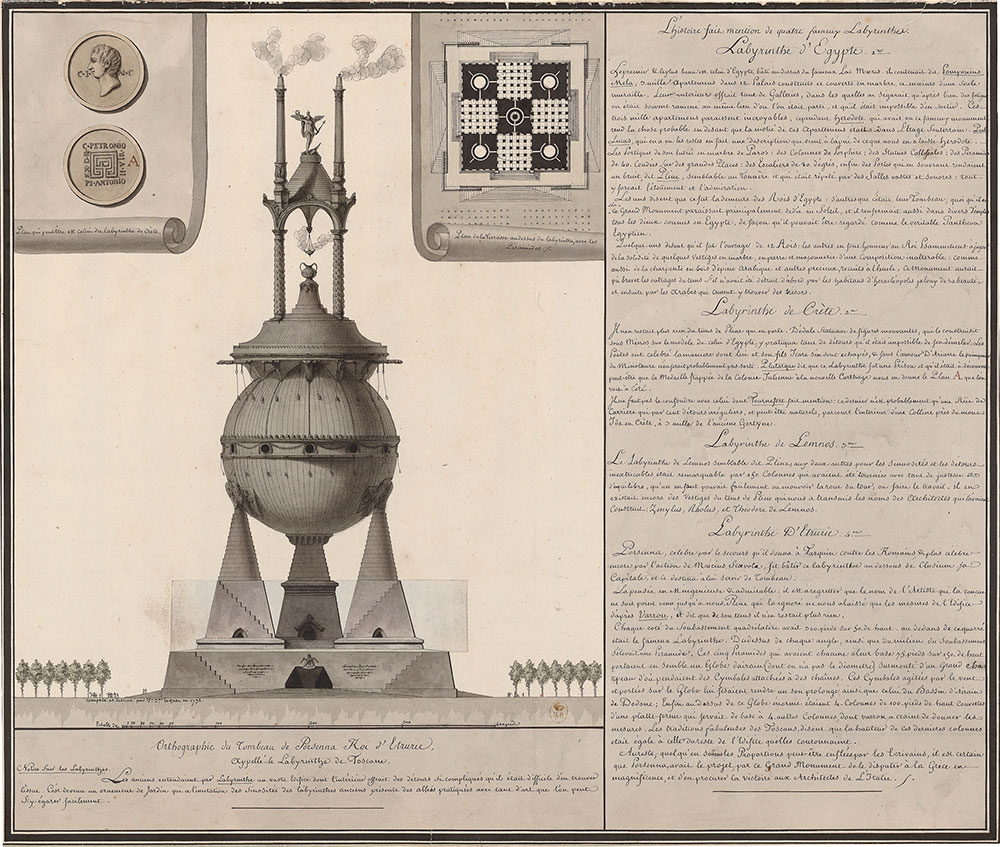
Intrigued by subterranean labyrinths, Lequeu here envisaged the legendary tomb of the Etruscan king Lars Porsena said to have been built around 500 BCE in Chiusi, Italy. Erected above an inescapable labyrinth, the massive structure boasted tiers of pyramids surmounted by a globe and adorned with bells that sounded in the wind. The scale of the monument is evident from the miniscule figures beneath the trees. At upper left is a rendering of a Roman coin struck in Spain; Lequeu interpreted its design as the mythical labyrinth of the Cretan king Minos. At right, Lequeu provided a compendium of ancient labyrinths based on descriptions from Herodotus and Pliny as well as contemporary travel literature.
Jean-Jacques Lequeu (1757–1826)
Etruscan Labyrinth, 1792
Pen and black ink, brown and gray wash, patch with revision at base of monument
Bibliothèque nationale de France, Departement des Estampes et de la photographie
